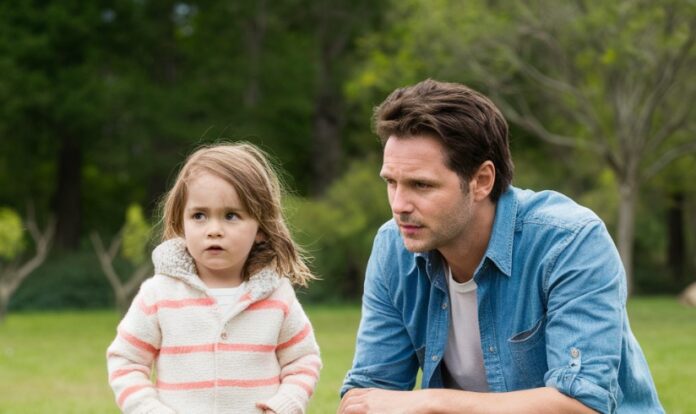When families go through significant changes such as divorce, the adults involved often face a whirlwind of emotions and practical challenges. In this difficult time, the emotional and developmental needs of young children might not always be at the forefront.
Helping young children understand the nature of divorce is critical for their emotional health and future development. This guide is here to provide parents with effective strategies and insights to assist their young children in dealing with the changes that divorce brings.
Starting the Conversation

The first discussion about divorce with your children is crucial. LACFLA understands this and can help. It’s important to choose a time when you are unlikely to be interrupted, in a setting that is comfortable and familiar. Start by reinforcing the unchanging love that both parents have for them.
Explain using simple and clear words that sometimes, adults choose to live apart because they don’t agree on important issues as they once did. It’s essential to stress that this situation results from adult decisions and is not caused by anything the child has done.
Emotions and Reactions
Children might react to the news of a divorce in various ways, such as confusion, sadness, anger, or even relief. It’s important to tell them that it’s okay to have these feelings. Encourage them to share their thoughts and emotions openly, without fear of being judged.
Children’s books on the topic of divorce can be a helpful resource. These books often present the subject in ways that children can relate to, helping them understand and express their feelings more effectively.
Consistency in Daily Life
For children, stability is essential, especially when they are dealing with the uncertainties of a divorce. Make an effort to keep daily routines as regular as possible, including school routines, meal times, and bedtime rituals.
This consistency offers a sense of security and normalcy. Despite the changes happening around them, the stability in their daily routines can help ease the transition.
Parental Involvement


Effective co-parenting during and after a divorce is crucial for the child’s emotional health. It is important for both parents to remain actively involved in their child’s life, participating in school functions, extracurricular activities, and maintaining regular communication.
When children observe their parents cooperating despite the separation, it reinforces their sense of security and demonstrates that parental love does not change with the divorce.
Ongoing Communication
Divorce is a continuing process rather than a single event. As children grow and develop a deeper understanding of relationships, they may have new questions and feelings about the divorce. Maintain open lines of communication and revisit the topic as necessary, providing more information suited to the child’s age and maturity.
Regular discussions about their feelings concerning the divorce can help children adapt over time and ensure they feel valued and understood despite the family’s changes.
Seeking Professional Help
At times, a child may have difficulties coping with the divorce despite a parent’s best efforts. In such situations, consulting a child psychologist or counselor can be beneficial.
These professionals specialize in assisting children to work through their emotions and can provide strategies specific to individual needs. Furthermore, support groups for children of divorced parents can offer them a community of peers who share similar experiences.
Reinforcing Support Through Action
While verbal reassurances are vital, actions can often speak louder than words. It is important for children to see and feel the support system around them. This means making physical presence a priority.
Arrange for quality time where the child can engage in activities they enjoy with each parent separately. This can reinforce the security they derive from both parents’ active participation in their lives.
Educating Through Example
As children observe how their parents handle the transition of divorce, they learn crucial lessons about handling adversity and change. Demonstrate positive coping mechanisms—like respectful communication and self-care practices—in front of your children.
This not only helps them learn to manage their own feelings in healthy ways but also sets a foundational example of mature behavior.
Preparing for Adjustments
As the divorce process progresses, various adjustments will need to be made, from living arrangements to holiday celebrations. Prepare your children for these changes by discussing them in advance.
Explain what will stay the same and what will change, and involve them in the decision-making process where appropriate, such as setting up a new room or choosing new traditions. This involvement can help alleviate feelings of loss and help them feel they have a say in their new life.
Celebrating the Positive Aspects
While divorce is often framed negatively, there are always silver linings to find and share with your children. Perhaps it means more one-on-one time with each parent or new traditions. Highlight these positives regularly to help children see that while life is different, it can still be good and filled with love and happiness.
Providing a Sense of Belonging
During the upheaval of divorce, children might feel like they no longer belong to a ‘normal’ family. Reassure them that many kinds of families exist and that a loving, supportive family is not defined merely by its structure. Share stories of other families that have gone through similar transitions successfully. This can help normalize their experiences and reinforce their sense of belonging to a community.
Conclusion: Embracing a New Chapter Together


Navigating the transition of divorce is a profound journey for a family. By addressing it with sensitivity, resilience, and open dialogue, you can guide your children through this time with strength and grace.
Emphasize the ongoing love and security that will continue despite the structural changes in the family. With patience and understanding, you can help your children adjust to this new phase of life, finding new ways to thrive and grow together as a family transformed, yet united.
In summary, handling the complexities of divorce with your children is about continual reassurance, open communication, and a lot of heart. As parents, your role in shaping how your children view and adapt to this new reality is immeasurable. By fostering an environment filled with love, understanding, and support, you ensure that the family’s new chapter is approached with hope and confidence.







